Osteocondrosis is a widespread disease of intervertebral discs that occur in people of different age groups.Nowadays, more than 40% of young people under the age of 35 are diagnosed, and 9 of the older categories affect 9 of the older categories.There are many stages of development, and the earlier the pathology, the easier and more effective the treatment and the lower the risk of hazardous complications.
What is osteochondrosis
Intervertebral discs are located between the spinal bodies and a kind of shock absorbers that absorb stress when traveling or other physical activities.They have different sizes, depending on their position: the plates are the smallest in the cervical region and the largest in the lumbar spine.
Each one builds the same thing.The focus is the Nucleus Pulposus, which is the main component of the disk and has great elasticity.It is surrounded by fibrous membrane and end plates.
Osteochondrosis is a degenerative-dynish disease in which the intervertebral discs change in the shape and size of their wear as a result of their abrasion and form prerequisites for the formation of hernia, deformation of spinal bodies, spondylosis and other disorders.
The thinning of the discs is the result of the malnutrition of the cartilage tissue, which leads to a gradual reduction of elasticity and increased fragility.
As a result, the plates change, decrease their heights, and the microtocras develop on the fibrous membrane.This creates serious prerequisites for the formation of intervertebral hernia, for spine roots or blood vessels.
The smallest changes in the condition of the disks lead to interrupting their functions.This is accompanied by pain of various intensity.At the same time, prerequisites for developing diseases of the internal organs are created because the quality of their activity depends directly on the state of the spine and the conductivity of bioelectric pulses along the nerves.
This can affect one or more vertebrae discs on any part of the spine.Therefore, osteochondrosis is diagnosed:
- cervical spine;
- chest spine;
- lumbar spine.
In particularly severe cases, the pathological process includes most of the vertebral discs of the spinal column, which is accompanied by the entire back and almost complete loss of performance.But osteochondrosis most often affects the lumbar spine as it carries the highest load and intervertebral discs of the cervix, due to their high mobility.
Development
During osteochondrosis 4 sections are roughly distinctive:
- A decrease in the hydration level of the disk, which leads to dehydration and the formation of microtos.At this stage, there are often no manifestation of initial disease.
- A decrease in the height of the disc, which leads to the appearance of the first symptoms of pathology.At this stage, the distance between each segment, which leads to a decrease in spinal tape sounds and provides an opportunity to move the vertebrae from their natural position, ie the development of spondylolisthesis.In such situations, the wave -like course of the disease is most commonly observed.It can distinguish between aggravation periods, acute pain and periods of remission, in which there is no discomfort or pain in pain.
- Deformation of the intervertebral disk involved with the formation of protrusion or prolapse.Occasionally, the joints are involved in the pathological process, which shows the development of arthrosis or vertebrate subluxations.At this stage, the immune system reacts to the processes occurring in the spine by developing aseptic inflammation with swelling of the tissues surrounding the affected spinal engine segment.In this case, the pain occurs regularly, and reflex muscle cramps and mobility restrictions can be observed.In rare cases, signs of neurological deficiency (radicular syndrome) are already formed as a result of pinching nerve fibers with the resulting protrusions of intervertebral discs.
- The development of complications.Because the human body has broad compensation capabilities when the intervertebral disk loses its ability to perform its functions, the process of osteosynthesis is activated to fix the vertebrae in a stable position.This leads to the formation of the bone protrusion - osteophytes - on the edge of the spinal bodies of the affected spinal movement.As a result, two or more vertebrae blends tightly and forms a single conglomerate, ie spondylosis.This always leads to parsid, paralysis and severe disorders in the form of proper internal organs in the functioning of the proper internal organs.
Reasons
Nowadays, there are many theories for the development of osteochondrosis, including vascular, mechanical, hereditary, hormonal, infectious-allergic and others.But neither of them can fully explain the mechanism of development of changes in intervertebral discs.Therefore, they are likely to complement each other.
Thus, a huge number of factors can lead to osteochondrosis.The most significant of these are:
- genetic predisposition;
- regular performance of heavy physical work;
- maintaining a sedentary lifestyle;
- the presence of deformation of skoliosis or other spine;
- suffering of back injuries;
- unbalanced diet, vitamin deficiency;
- infectious diseases;
- metabolic disorders;
- Congenital disorders of the spine (exhaustive disorder, chiari -disorder, craniovertebral disorders, sacralization, lumarization);
- overweight;
- Regular severe stress.
It is believed that the condition of intervertebral discs is the most significant effect of a constant overload of a certain spinal movement.This can not only do monotonous hard physical work, but also the habit of constant bending or for a long time.In such situations, further stress is placed on discs, muscles and ligaments, and other factors only exacerbate the situation.
Generally speaking, osteochondrosis can be called an almost natural age -related disease, which is an inevitable price to pay for a straight walk.
Symptoms
The earliest sign of the development of the disease is the appearance of a crunching sound in the spine where the appearance of degenerative-dynist changes can be observed.As a result, due to the occurrence of disorders in the diet of the disc and the progress of dehydration.At this stage, patients almost never seek medical attention.Therefore, their daily routine, their eating habits and other factors remain unchanged, which contributes to the deterioration of the situation and the transition to the second stage of the disease.
As a result, the symptoms of osteochondrosis appear:
- severe muscle tension in the affected area of the spine only one or both sides;
- Sharp and painful pains that increase with all motions and are intense over time, becoming unbearable;
- numbness in arms or legs;
- weakness;
- The stiffness of movements, unauthorized restriction of mobility;
- Decreased muscle tone in the entirety of atrophy;
- bad posture;
- Waves of blood pressure.
As the pathology progresses, signs of osteochondrosis are deteriorated.80% of patients suffer boring pain in the affected spinal movement segment, which is also typical of myositis.
The cervical spine osteochondrosis
When it affects the cervix's spine, the pain is prone to the shoulder belt, arms and other neurological disorders.Patients keep their heads in the least painful position and turn with their entire body if necessary.
In addition
- tinnitus and disease of ENT organs;
- dizziness;
- blurred vision;
- migraine;
- the levels of irritability and anxiety increase;
- sleep problems;
- increased risk of allergic reactions;
- Decreased levels of thyroid hormones.
With osteochondrosis of the cervical spine, the spine arterial syndrome and vegetative-vascular dystonia are often diagnosed.
Infection of the cervical spine with osteochondrosis, especially if protrusions and intervertebral hernia are sophisticated, can lead to the sting of blood vessels.It is full of blood supply to the brain, which can be accompanied by dizziness, loss of awareness and even stroke.
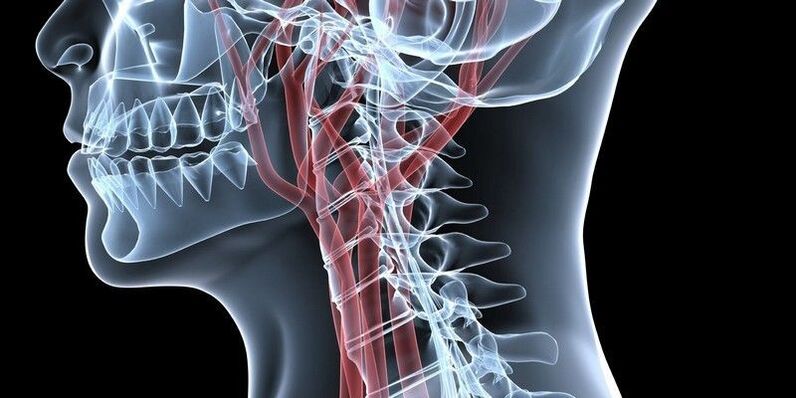
The chest spine osteochondrosis
With osteochondrosis of the chest region, which is quite rarely diagnosed, pain occurs in the spine at the level of blades, and may increase even when taking a deep breath.They often feel behind the sternum, which can be confused due to heart disease.
When the roots of the spine are pinched, the risk of diseases of the internal organs is particularly increased:
- Bronchi and lungs (asthma, bronchitis, pneumonia, pleurisy);
- gallbladder and its channel, liver (cholecystitis, jaundice, fat absorption disorders);
- pancreas and duodenum (digestive disorders, pain in left hypocondrium);
- Adrenal glands that affect the overall strength of the immune system and can provoke the development of allergies;
- kidney (urinary tract disorders, chronic pyelonephritis, glomerulonephritis, etc.);
- Pool organs (digestive disorders, gynecological, urological diseases, infertility).
Fact: Damage to the 7th chest vertebrae can lead to the formation of diabetes mellitus through osteochondrosis.
The lumbosacral spine osteochondrosis
Lumbago, the so -called Lumbago, is observed with osteochondrosis of the lumbar region.This is accompanied by burning, unbearable pain, which suddenly occurs.Often patients are still difficult to sit, rise and walk, which may indicate the development of radicular syndrome.In such situations, it is easy to notice that they are slowly sitting down and standing up as much as possible to avoid their strain.
If complications occur, the main danger is to pinch the nerves of cauda equina, as this can reduce the control of the intestinal and bladder emptying processes and the paralysis of the legs.In such cases, the following may occur:
- appendicitis;
- diarrhea, constipation;
- pain in the lower abdomen;
- bladder dysfunction;
- impotence;
- pain in the area of knees, feet, hips or groin;
- Swelling of the legs.
Complication
Osteochondrosis is a huge number of various diseases.Most often, if it remains untreated, it leads to protrusion and vertebral hernia.This can, in turn, cause:
- Discover myelopathy, which is also with paresis, muscle atrophy, changes in tendons, loss of urination and anti -emptying, and paralysis of the limbs;
- radiculopathy;
- scoliotic or other spine deformation;
- spinal cord infarction due to compression of the nourishing artery;
- Stroke due to compression of the occlital artery.
Diagnosis
The appearance of pain in the back and neck may be due to contact with the neurologist or a refinement.The sooner the osteochondrosis is diagnosed, the easier and efficient the treatment will be.
To diagnose the disease, the physician prepares interviews and examines the patient.Based on their results, we can already assume that degenerative changes appear in the intervertebral discs.However, instrumental diagnostic methods are required for the final diagnosis, including:
- MRI;
- Ct;
- X -ray in two forecasts.
Magnetic resonance imaging provides the most complete information on the condition of intervertebral discs.The procedure is primarily carried out in closed-type devices with a power of 1.5 t.It allows you to distinguish osteochondrosis from tuberculosis spondilitis, osteomyelitis, infectious diseases, etc.
CT scans and X -rays provide information on the bone structure of the spine.Thanks to them, we can detect the displacement of the spinal bodies, the presence of osteophytes and other disorders.
In addition, the following can be prescribed:
- Ultrasound with cervical vessels doppllerography;
- electromiography;
- Laboratory research.
Treatment of osteochondrosis
Therapy has been developed separately in each patient.In this case, the severity of the degenerative-dynist processes, the presence of complications, the nature of the patient's work activity and many other factors should be taken into account.
Each patient should prescribe a set of measures as it is impossible to eliminate pathological changes in intervertebral discs only with medicines.The components of conservative therapy for osteochondrosis may include:
- medication;
- osteopathy;
- Manual therapy;
- physiotherapy (phonophoresis, ozone therapy, carboxytherapy, press, RF currents);
- Individual sessions with rehabilitator.
We recommend that all patients diagnosed with dystrophy between the vertebrae we recommend to consider their lifestyle.It is important to distinguish the time for moderate physical activity, especially for representatives of sedentary professions, or vice versa, to think about the possibility of changing professions to people who are forced to raise difficult objects every day.
But in the acute period, complete rest is recommended.It is provided not only by resting the bed, but also by wearing orthopedic bandages: a drooling collar can be used if the cervical spine is damaged;In the case of osteochondrosis of the lumbar region, it is recommended to wear corset.
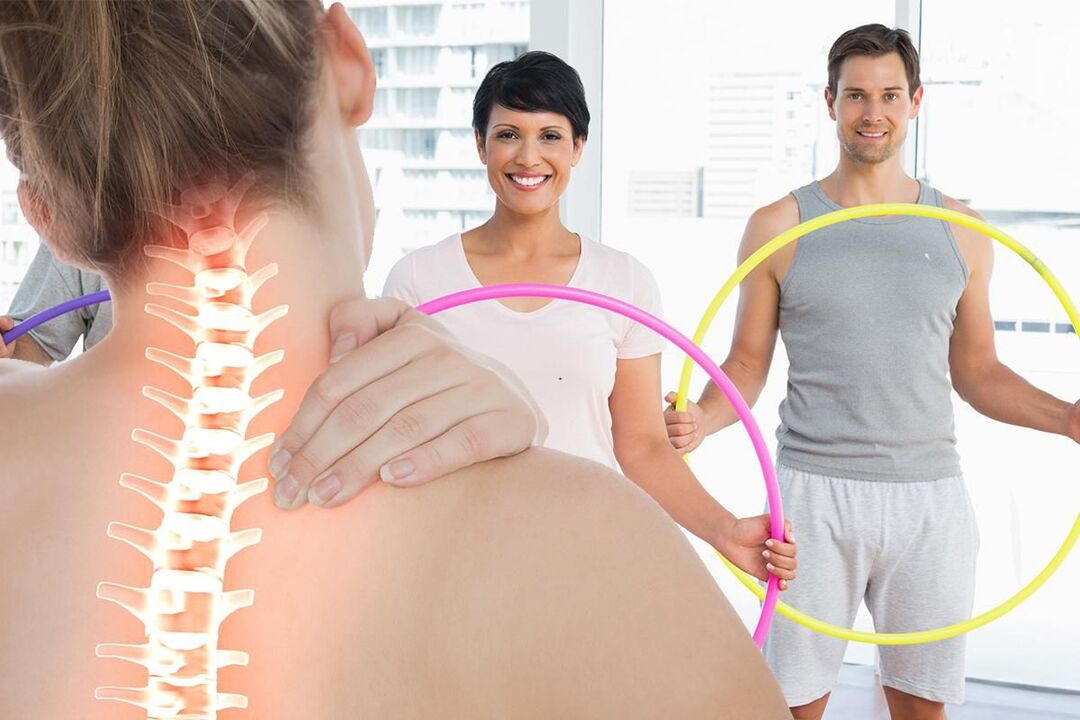
In the first phase of the disease, it is often sufficient to adjust your lifestyle, to participate in exercise therapy and to visit the chiropractor.In more advanced cases, drug therapy and physiotherapy are necessarily prescribed.
Never require self -healing with dubious tools, self -examination of anti -inflammatory drugs, and dubious "healers" who position themselves on the Internet: you can lose not only time but also the remains of health.
Medication
For osteochondrosis, a complex of drugs is required to reduce pain, to eliminate inflammation and reflex muscle cramps, to improve nerve conduction and to activate tissue regeneration processes of intervertebrate discs.
Therefore, patients are prescribed:
- NSAIDS-help reduce pain and have anti-inflammatory effects;
- corticosteroids have strong anti-inflammatory properties;
- Muscle loosers - eliminate muscle cramps, which promotes reducing back pain;
- Vitamins B - provides better functioning of the nervous system and conducting nerve impulses, especially along each nerve;
- Vitamin D for bone tissue condition and higher brain functions such as memory, attention, speech;
- Chondroprotectors - nourishes intervertebral discs with the compounds needed to build new fibers of Nucleus Pulposus;
- Psychotropic drugs-increase the efficiency of non-steroidal anti-inflammatory drugs and muscle relaxation;
- Vascular drugs - improve blood circulation in the tissues surrounding the spine, which provides more active supply of nutrients and oxygen for intervertebral discs;
- Anticonvulsants - in rare cases to relieve very severe cramps.
In the case of very severe pain, which most often indicates complications, patients may undergo a back blockade, which have an immediate effect.Occasionally corticosteroid hormones are added to the solution to implement the blockade.This also leads to a prominent anti -inflammatory effect.
Blockades are carried out under absolute sterility conditions, which can only be achieved in special medical institutions.At the same time, they require special knowledge and skills, so only a highly trained health worker can cope with the task.Otherwise, there is a high risk of damage to infection or nerve fiber, leading to serious complications.
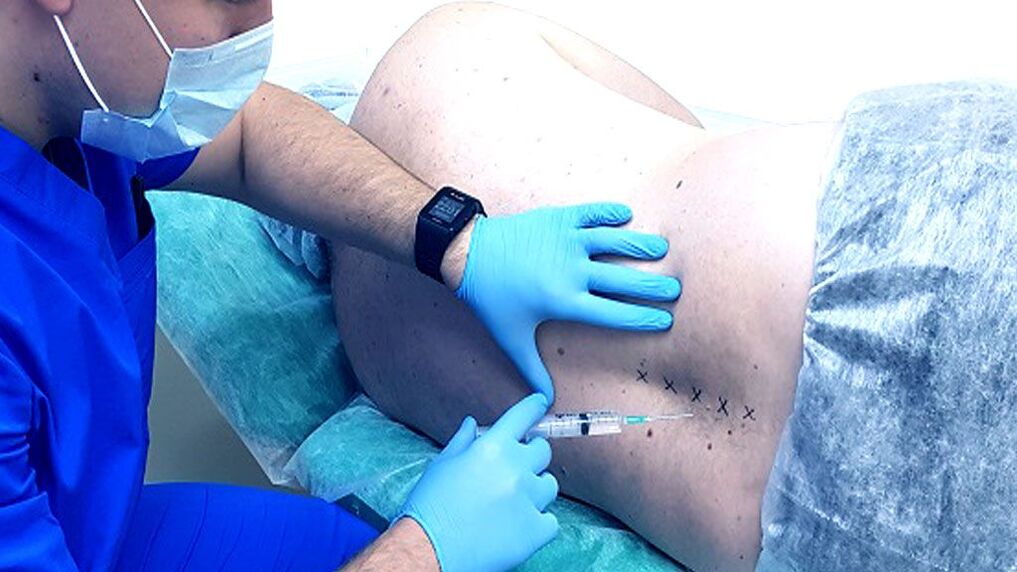
During the blockade, injections are usually given on both sides of the spine in the area where the nerves that cause pain occur.There are many techniques to carry out those of which the physician selects the specific one separately.
But it is advisable to execute the blockades up to four times a year.Because of osteochondrosis, the attack of acute, painful pain is much more common, it is worth directing efforts to eliminate the causes of their occurrence, that is, the degenerative-dynist process in the joint itself.
Manual therapy
Manual therapeutic activities are prescribed outside the aggravation period of osteochondrosis.They play one leading role in the treatment of the disease, as the competent use of manual techniques in the spine and surrounding tissues not only helps to stop the pathological process progress in intervertebral plates, but also to create the most favorable conditions for restoration.
In addition, certain techniques can have a positive effect on the functioning of the internal organs.For example, one method is designed to normalize the position of each vertebra to eliminate pressure on the roots of the spine, blood vessels and spinal membranes, thus restoring the normal connection of the organ with the nervous system.This allows the heart, bronchi, lungs, kidneys, stomach tract and the evolution of the above diseases of the reproductive system and results in complete healing.
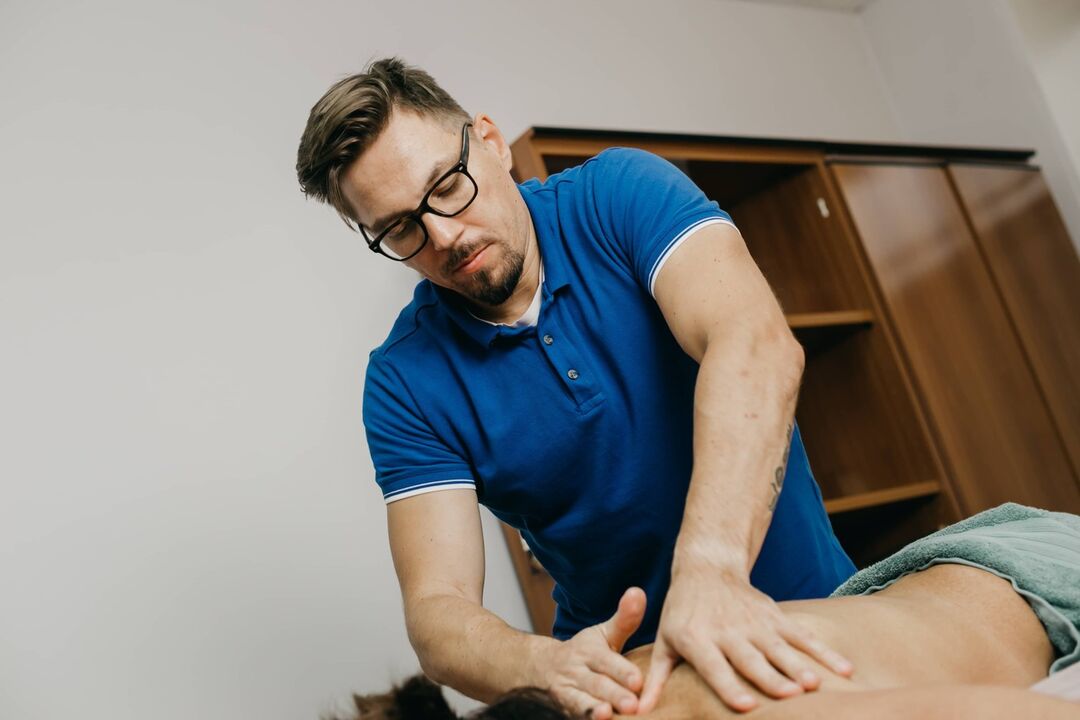
Thanks to the jewelry-point effect on the spine, not only the blood circulation is activated and the metabolism is accelerated, as with the classic therapeutic massage, but also the natural self-healing mechanisms.Eliminating the curvature of the spine, the improper position of the vertebrae and other pathological changes in the spine can further strengthen the immune system, improve general prosperity and significantly improve the quality of life.
Positive changes are noticeable after the first session, and in the future only their severity will increase.
Physiotherapy
Physiotherapy procedures increase the effectiveness of all other methods of treating osteochondrosis and help pain.Most commonly used:
- Electrophoresis - the use of electrical current to ensure anesthesia, anti -inflammatory and other agents directly to the site of inflammation, allowing the pronunciation to rapidly achieve the pronunciation;
- Ultrasound therapy - the effect of ultrasound results in an analgesic effect, improves the intensity of metabolic processes in the sphere of influence, and creates prerequisites for high quality restoration of thinned intervertebrate sheets;
- Detensor therapy - involves stretching and massaging the spine on a special ribbed mattress that activates blood circulation and increases muscle tone;
- Towing therapy or spine traction - are carried out using special tools that create a pull load on the spine, which results in the distance between the vertebrae and the pressure on the worn vertebrae reduces sharply, which allows it to be more active.
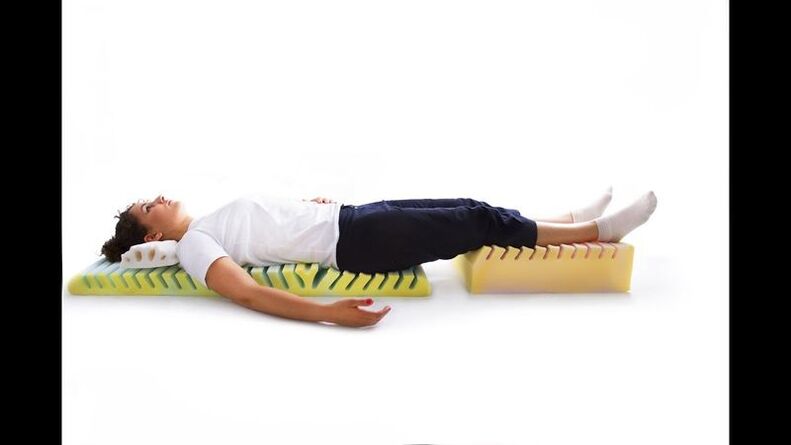
All procedures are held at 10-15 meetings.When they are selected, not only the condition of the intervertebral plates, but also the presence of concomitant diseases, are taken into account, as some of them are contraindicated in certain physical effects.
Practice therapy
Therapeutic practices of osteochondrosis play a significant role as well -selected exercises can help to damage different parts of the spine and at the same time eliminate increased muscle tone.This provides good support to the spine and stops the degenerative process progress in the intervertebral plates.In addition, body exercise promotes the activation of blood circulation and increases the intensity of metabolism processes.
The development of the physiotherapy program is the responsibility of a rehabilitation physician.Based on the severity of the spinal lesion, the characteristics of the patient's physical development, the age and other factors of the patient, it will create an optimal set of practical sets, the implementation of which will result in optimum load on the muscles and the spine.
The first classes should be continued under the supervision of a physician.Once the patient learns to do each exercise correctly, he allows him to continue to practice at home.It is important to avoid sudden movements.All exercises are performed slowly and smoothly daily and the load gradually increases.But the occurrence of pain during exercise is a good reason to deny provoking practice.

Prevention
It is much easier to prevent a disease from developing than to treat its consequences later.Because osteochondrosis can occur sooner or later, think about possible risks as soon as possible and make every effort to prevent it.Therefore, everyone has to keep the following recommendations:
- Avoid physical inactivity, regular exercise, swimming and sitting work regularly for heating;
- Take care of your posture while walking or sitting;
- buy high quality orthopedic mattresses and pillows;
- Note the appropriate technique of lifting weights: straight back and bent knee;
- Change casual shoes to the most comfortable and leave the cloths for special occasions;
- Eat well to prevent the body from experiencing nutritional deficiencies and the weight remains within normal limits.
There is only one way to avoid the appearance and manifestation of the symptoms of osteochondrosis - start taking care of yourself and health.Because osteochondrosis is not only a disease, but also a complex of muscle-tonic and neurodistophical changes, which are the body's reaction to physical inactivity, chronic static tension of the muscles of the spine, environmental position and chronic neurosis, especially in urban residents, swimming and stretching programs.
Thus, osteochondrosis is a very common disease, but with carefully monitoring your own health you can fight effectively at any age.However, ignoring the problem does not lead to any good, and sooner or later it will make the patient lie on the operating table.
























